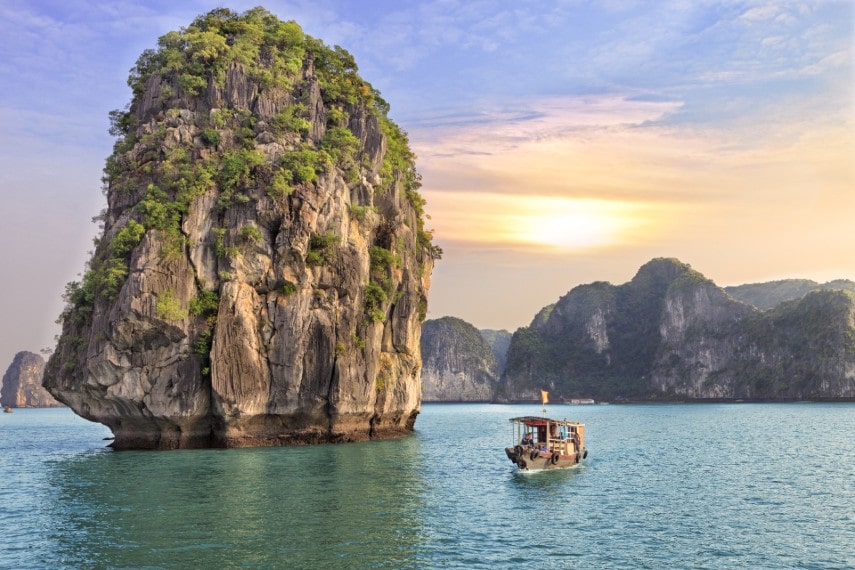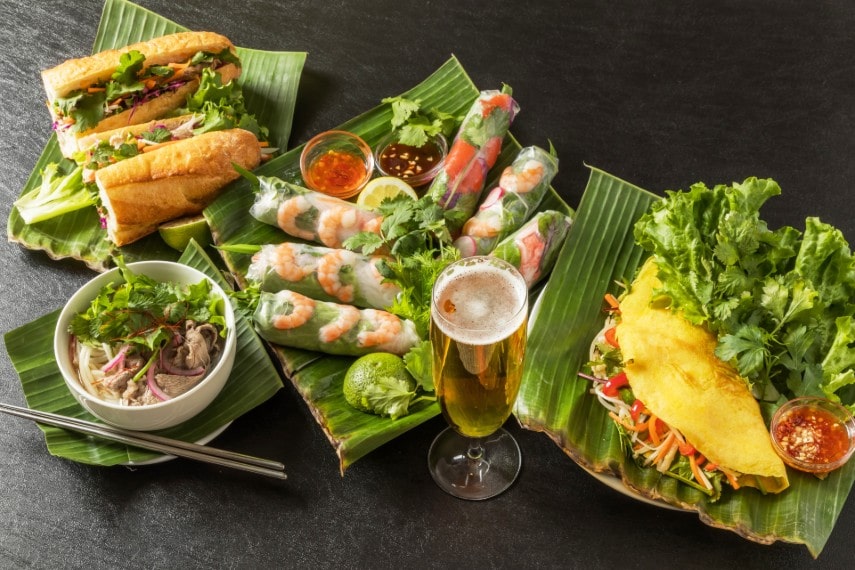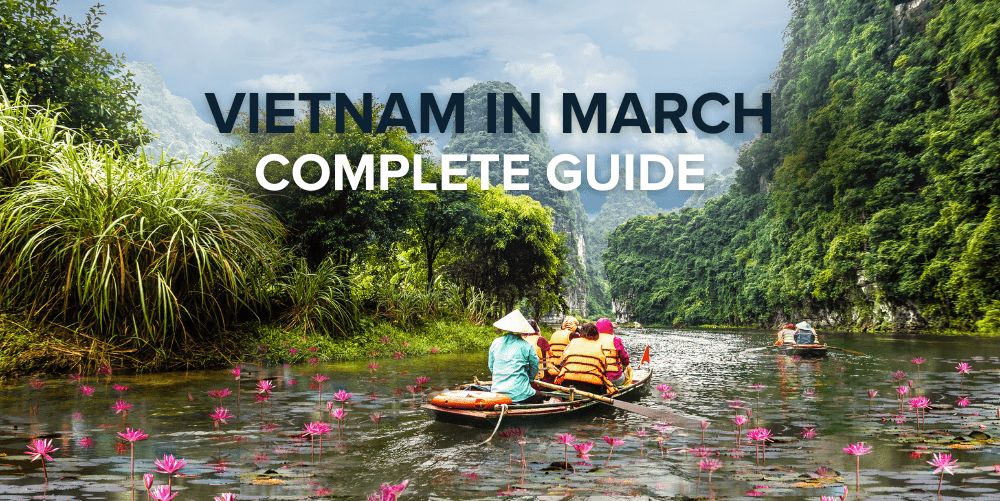A lot of people are doubtful about whether travelling to Vietnam in March is a good option or not. This destination is surely one of the best Asian places you can visit during the month. Owing to the natural beauty and weather, there is something that everyone can enjoy while visiting here. Needless to say, Vietnam is an awesome destination throughout the year.
It has different faces in different months so if you want to enjoy the cooler and balmy weather of the country, March can be an ideal time. Although, the weather remains different in the various areas, if you want to know what exactly you should expect of this place in Jan, then give this blog a quick read.
Is March a good time to visit Vietnam?

Surely this is an excellent time to visit Vietnam. It falls during the warm, dry season, making it ideal for exploring the country. Northern Vietnam experiences pleasant temperatures, which are perfect for sightseeing in cities like Hanoi and trekking in regions like Sapa.
Central Vietnam enjoys mild weather, which is great for enjoying the beaches and cultural heritage sites in places like Da Nang and Hoi An. In the south, the weather is warm and dry, ideal for relaxing in Ho Chi Minh City or the Mekong Delta.
Overview of weather in Vietnam in March

Vietnam enjoys its cool, dry season, making it one of the best times to visit. The weather varies by region: in the north, temperatures range from 18°C to 25°C, with cool, misty mornings and occasional light rain. Central Vietnam experiences mild weather, ranging from 21°C to 27°C, making it ideal for outdoor exploration.
The south is warm and dry, with temperatures between 25°C and 30°C, perfect for beach activities and sightseeing. Rainfall is generally low across the country, especially in the south, where it’s the driest. Northern and central regions may see occasional light showers, but overall, March offers pleasant conditions for travel and exploration.
What to wear in Vietnam in March?

What you wear in Vietnam largely depends on the region you’re visiting. For the north, where temperatures are cooler, especially in the mornings and evenings, bring a light jacket or sweater. Layers are essential, as the days are mild but can feel chilly.
In the central regions, pack light clothing, such as short-sleeve shirts and pants, but carry a light jacket for cooler evenings. The south remains warm and dry, so lightweight, breathable clothes like t-shirts, shorts, and dresses are perfect.
Comfortable walking shoes are essential for sightseeing, and don’t forget sunscreen, sunglasses, and a hat to protect from the sun. An umbrella or raincoat may be useful for light, occasional rain in some regions.
Visitor arrivals: Is Vietnam crowded during March?

March can be a bit crowded in Vietnam because March is one of the peak months here. The early part of the month tends to be less crowded, making it a great time to explore without overwhelming crowds. Major cities like Hanoi and Ho Chi Minh City, along with popular tourist areas such as Hoi An and Ha Long Bay, see more visitors as Tết approaches, but the overall experience remains pleasant with the cool, dry weather.
Average costs of a trip to Vietnam in March
The third month of the year is a great time to visit Vietnam, but costs can vary depending on your travel style and the locations you visit. Airfare to Vietnam in March generally ranges from £479 to £957 for round-trip flights from the US or Europe, depending on when you book. For travellers from nearby regions like Southeast Asia, fares are often much cheaper, starting at around £80 to £240. It’s always a good idea to book in advance for better deals.
Accommodation prices in Vietnam vary greatly depending on location and comfort level. Budget travellers can find simple guesthouses or hostels for £7 to £16 per night, while mid-range hotels range from £24 to £55 per night. In major cities like Hanoi and Ho Chi Minh City, upscale hotels and resorts can cost between £80 to £161 per night, and luxury accommodations can exceed £240 per night. Resorts and hotels in coastal areas like Da Nang or Phu Quoc may have similar price ranges, with beachside resorts at the higher end.
Transfers within the country are affordable. Domestic flights between major cities like Hanoi, Da Nang, and Ho Chi Minh City typically range from £24 to £80, depending on the route and how early you book. Trains and buses are also budget-friendly, with costs for long-distance trains starting at around £16 to £32 for sleeper classes. Local transportation, like taxis, Grab rides, and buses, are inexpensive, with typical fares of around £3 per trip in cities.
Dining in Vietnam is affordable, with street food and local restaurants offering meals for as little a £3. Mid-range restaurants typically charge £8 to £17 per person.
Things to do in Vietnam in March 2026

It gives an exciting blend of cultural exploration and natural beauty. The cool, dry weather makes it an excellent time to explore the country’s diverse landscapes, from bustling cities to tranquil countryside. Whether you’re drawn to historical sites, coastal beauty, or vibrant local traditions, this time of year allows for a relaxed yet enriching travel experience. The preparations for the Tết festival also bring an extra layer of excitement, with lively markets and festive decorations. Overall, March presents a perfect balance of comfort, culture, and adventure, ensuring a memorable visit to Vietnam.
| Things to Do in Vietnam in March | |
| Visit the Imperial City of Hue | Explore the ancient streets of Hanoi |
| Take a cruise in Ha Long Bay | Relax on the beaches of Da Nang |
| Explore the ancient town of Hoi An | Trek in the Sapa region |
| Visit the Mekong Delta | Discover the Cu Chi Tunnels near Ho Chi Minh City |
| Experience local markets and Tet preparations | Visit Phong Nha-Kẻ Bàng National Park |
| Enjoy street food tours in Ho Chi Minh City | Explore the floating markets in the Mekong Delta |
Where to stay in Vietnam in March 2026?
There is a wide range of accommodation options to suit different preferences and budgets. In cities like Hanoi and Ho Chi Minh City, you can find everything from budget guesthouses to luxurious hotels, allowing easy access to vibrant street life and cultural landmarks. For a more serene experience, consider staying in coastal areas like Da Nang or Phu Quoc, where beachfront resorts offer a relaxing retreat. For nature lovers, the mountainous regions of Sapa and Ha Giang have cosy homestays and boutique lodges, providing an authentic, peaceful stay amidst stunning landscapes. Whether you seek comfort, adventure, or tranquillity, Vietnam has something to offer.
| Best Resorts and Hotels in Vietnam to pick from | |
| Sofitel Legend Metropole Hanoi | The Reverie Saigon, Ho Chi Minh City |
| InterContinental Danang Sun Peninsula Resort | Anantara Hoi An Resort |
| The Grand Hanoi Hotel | Six Senses Ninh Van Bay |
| Hotel des Arts Saigon | Banyan Tree Lang Co |
| Vinpearl Resort & Spa Phu Quoc | La Siesta Hotel & Spa, Hanoi |
What to eat in Vietnam in March?

There is a variety of seasonal dishes that showcase the freshest ingredients. Pho, the iconic noodle soup, is a must-try, especially with the cooler weather in northern regions. You’ll find it with either beef or chicken, garnished with fresh herbs and lime. In central Vietnam, Bánh Xèo (crispy pancakes) filled with shrimp, pork, and bean sprouts is a flavourful favourite.
The cooler climate also means it’s the perfect time for hotpot dishes, where fresh meats, seafood, and vegetables are cooked in a communal pot. Bánh Chưng, a traditional square rice cake wrapped in banana leaves symbolising family unity is a delicacy relished by many here. Don’t miss out on seasonal fruits like persimmons and oranges, which are especially sweet this time of year.
What to pack in Vietnam in March?

For the north, pack layers, including a light jacket or sweater for cooler mornings and evenings in cities like Hanoi and Sapa. A comfortable pair of walking shoes is essential for exploring. In the central regions, like Da Nang and Hoi An, bring light clothing for daytime warmth but pack a light jacket for evenings.
The south remains warm, so lightweight, breathable clothes like t-shirts, shorts, and dresses are ideal. An umbrella or raincoat can be handy in case of occasional light rain. Don’t forget sunscreen, sunglasses, and a hat for sun protection. If you plan to visit temples, bring modest clothing covering your shoulders and knees.
Hacks & tips to visit Vietnam in March
Here are some quick tips that can help you make your trip better and smoother.
- Make sure to book accommodations, flights, and transportation well in advance, as this is a peak travel time, and many services may be closed during the holiday.
- The weather can vary significantly by region. Pack light, breathable clothes for the south, but bring a light jacket or sweater for cooler northern evenings.
- Vietnam’s dry season can still feel warm in many areas, so keep a water bottle handy to stay hydrated.
- March is a great time to enjoy seasonal dishes, such as hotpots and fresh fruits. Don’t miss street food stalls for an authentic culinary experience.
- While credit cards are accepted in major cities, smaller towns and rural areas often rely on cash. Always have some Vietnamese Dong on hand.
- To avoid crowds, especially at popular tourist spots, try to visit early in the morning or later in the afternoon.
- In cities, Grab (ride-hailing app) is an affordable and convenient way to get around, whether by car or motorbike.
- If you’re in Vietnam during Tết, research when festivals or events are happening, as many local businesses and attractions may close or adjust their hours.
- If you’re travelling to northern regions like Hanoi or Sapa, pack for cooler weather, especially if you plan to trek or explore mountainous areas.
Read Also: Best time to visit Vietnam | Visit Vietnam in January
Vietnam in February | Things to do in Vietnam | Vietnam in November
Places to visit in Vietnam | Vietnam in December | Vietnam in October
FAQs of Vietnam in March
Is it hot in Vietnam in March?
Vietnam enjoys mild and pleasant temperatures, making it an ideal time to visit. While the south remains warm and comfortable, with temperatures ranging from 25°C to 30°C, the north and central regions experience cooler, more refreshing weather, perfect for sightseeing and outdoor activities. Northern areas like Hanoi may have cooler temperatures around 15°C to 22°C, providing a cosy atmosphere. Overall, the weather is favourable for exploring the country’s vibrant culture and stunning landscapes, making it a great escape from the heat of other regions.
Is Vietnam expensive in March?
Vietnam remains quite affordable in March, offering great value for travellers. Accommodations range from budget guesthouses to luxury resorts, ensuring options for all budgets. Dining is inexpensive, with street food and local restaurants serving delicious meals for just a few dollars. Transportation, whether by bus, train, or local rides, is also affordable. Vietnam offers budget-friendly options compared to many other destinations in Asia, making it an excellent value for money.







No Comments on A Comprehensive Guide for Visiting Vietnam in March 2026